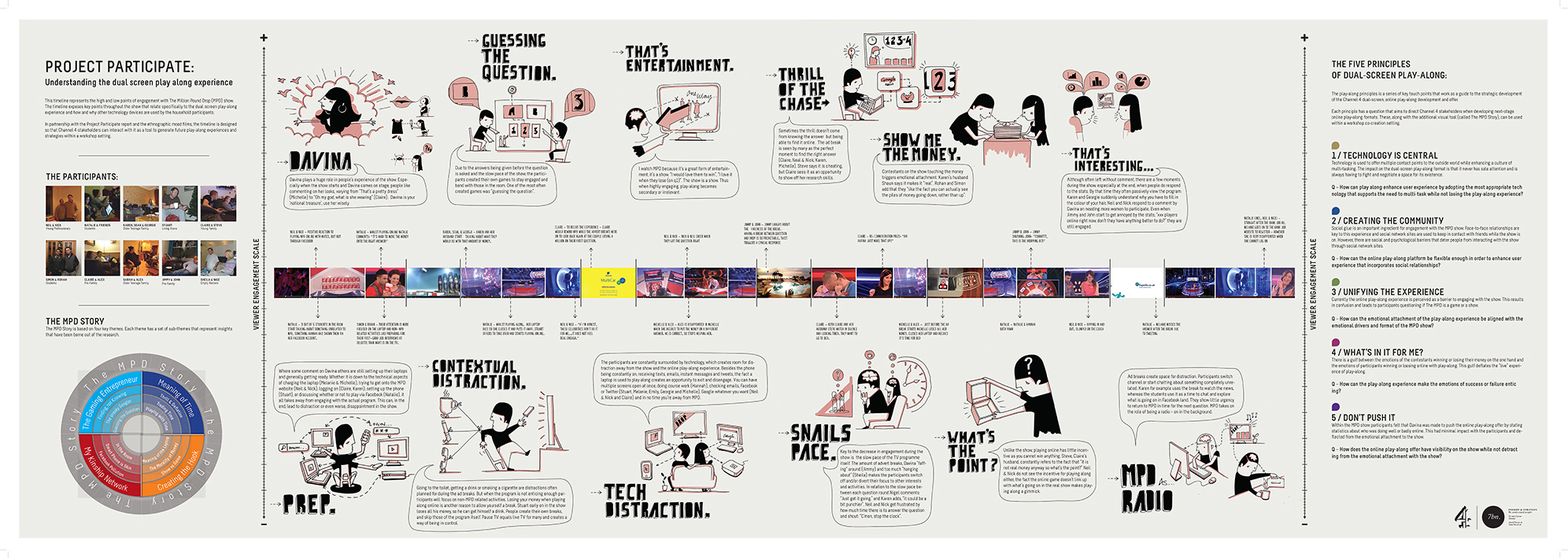
Playing The Play Along Game
Channel 4 knew that the critics liked The Million Pound Drop Live’s Play Along format: BAFTA gave it an award for digital creativity in 2011. What its commissioners didn’t know was how the show’s viewers felt about, and used, the dual screen technology.
That’s where we came in. By observing viewers in their homes, we were able to show Channel 4 that people dipped in and out of the play along format, or created their own informal version of it.
These insights, while surprising, would help its commissioners to rethink the way they build the dual screen format into their game shows; innovate by offering it in other programme types; and, ultimately, maximise its advertising revenue.
Project Aims
Big Brother left big shoes to fill at Channel 4. But with its innovative concept, strong ratings and viewers worldwide, the Million Pound Drop has done a pretty good job of filling them.
The show’s USP is its dual screen technology. Allowing people to play along online (and, more recently, through smartphone apps) means they can experience the show as a studio contestant would: with all the accompanying highs, lows and edge-of-your-seat tension.
But Channel 4 was missing a crucial piece of the jigsaw – how the audience felt about and used the Play Along format. Without that, its commissioners couldn’t effectively plan how to use this technology across other types of programme. So they approached us to help them find the answers.
Process
To understand the behavioural and emotional factors that made audiences take part in, or reject, the Play Along format, we spent evenings in the homes of fans of the show – observing and documenting their behaviours and emotions as they watched it.
We then used cultural analysis to map the high and low points in how people engaged with the show. The outputs of this work formed the basis for an innovation workshop with Channel 4 commissioners to create design briefs they could use for other types of programme.
Key Insights
Our work revealed that the Play Along format wasn’t as central to viewers’ experience of the show as Channel 4 had believed.
Instead of taking part throughout, we found that viewers were dipping in and out as suited them. They were pausing while they did something else, returning to the show late after channel-hopping during the ad breaks and even playing an informal game with each other (“I’ll bet you a fiver it’s that one.”) And because the show is live, pausing the TV while they made a cup of tea or took a phone call would put the show out of sync with its online version, so viewers couldn’t rejoin afterwards.
Our work also revealed that the length of the show (60-90 minutes) made it less likely for viewers to play along throughout. And that some people felt there weren’t any “real” stakes to play for.
Value for the Client
Understanding how people really felt about, and interacted with, the Play Along technology helped Channel 4 to rethink how it uses multi-platform formats – not just in current and future game shows, but in documentaries, reality shows and news programmes. All of which has helped it to keep audiences engaged and advertisers happy.

